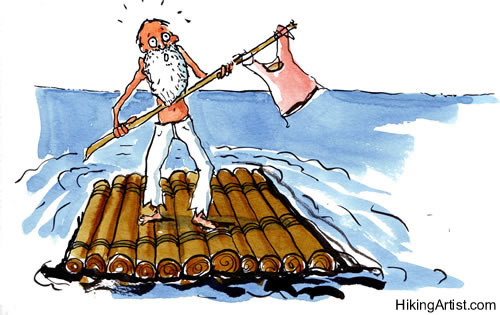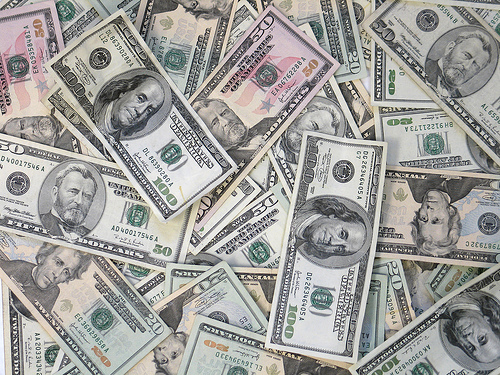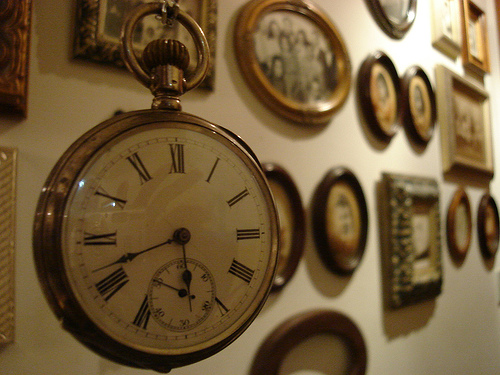The following is a guest post by Joan Lefkowitz.
You might think that during times of economic recession consumers are in no mood to experiment with, or purchase inventive products. Counter-intuitively, starting a business or launching an invention during a recession can be one of the smartest moves to make — depending of course, on if you take certain factors into account. Looking at past recessions and consumer psychology can give us ideas on the types of inventions that can succeed during an economic downturn. Let’s walk through some of these themes that appear on the psychological landscape during a recession.

photo credit: foxypar4
Nesting
Let’s start with how people are feeling during these uncertain times. Recessions can generate fear and uncertainty in the minds of people. All around, people are watching others suffer economic hardship, losing their jobs and homes. A result of this is a mindful gratitude that they are not that person they see struggling on the nightly news or in their neighborhood. An appreciation of what one already has, as opposed to what one can attain becomes paramount.
That’s why many inventions that do well during hard times have to do with comfort, organization and do-it-yourself products. Nesting relates to all things related to the home; personal possessions, making oneself more comfortable and secure, improving home environment, and making one’s life more functional. It’s also a known fact that during recessions, many people have less disposable income to spend on going out, so home entertainment and gaming items are always popular. An example of an inventive gaming product introduced during this recession is The Sega “Project Beauty” virtual reality video game (designed for Nintendo DS), which helps women try out different make-up looks via their TV screen. The Magic Fur Ball helps take care of your clothing and laundry by removing people and pet hair from fabrics in the dryer. Lumbarwear is a soft undergarment that supports core and back strength, while providing comfort to the wearer. Tag Tamers is another product that enables comfort by relieving the itchiness of garment labels and eliminating the need to cut them out of clothing. By the way, replenishment products such as this are great for repeat sales. The stylish Shoe Seen is a transparent shoe pouch that helps people organize and store their footwear. All of these are products that satisfy that urge for nesting.

photo credit: Sir Mervs
Competition — “Looking Good is Feeling Good”
People are looking to improve themselves to compete in a tougher job market. They become acutely more aware of their own presentation and appearance, viewing the world as a more competitive, rather than friendly place. A recent ‘Do-it-Yourself’ beauty invention that’s a hit in the market is the ZENO PRO Acne Clearing Device (uses heat to clear blemishes), which despite retailing at over $100 saves money that would otherwise be spent at the dermatologist. Another example of a grooming tool that’s time and money saving (no trips to the salon!) and makes the consumer look good is R.E.M. Spring, a battery-free facial hair remover. Slimpressions is a shapewear product designed to slim a woman’s arms, back and midriff. These products help people look great, and also are created to deal with ongoing beauty issues.

photo credit: HikingArtist.com
Survivor
Where once people saw life as a progression of economic milestones, lowering expectations during a recession to “just getting by” becomes routine. Products that emphasize survival in the economic storm should be central in the minds of inventors. For example, Steam Buddy iron that replaces dry-cleaner wrinkle-removal (plus, you don’t have to drag out the ironing board) costs about $20, but saves the average customer $100’s in dry cleaning bills over the course of a year. Re-usable items that replace disposables, such as Zorbeez absorbent cloths that are used in place of paper towels, will also appeal to money-strapped consumers.
Back in the 1960’s, there used to be special areas in department stores that sold “Notions” or problem-solving personal products. Today these types of products that emphasize personal preparation are thriving on the internet, and in mail order catalogues. Examples include Hollywood Fashion Tapes, double sided clear tape for “fashion emergencies”, and Bosom Button, a discreet jewel-like pin which allows people to wear clothes with embarrassingly low necklines, or turn scarves into skirts.

photo credit: TheAlieness GiselaGiardino²³
Escapism… and Hope
Recessions can cause collective anxiety and panic within the public. Thoughts of losing ones job, the home that the job pays for, and all its contents, are scary enough. It’s common knowledge that during the great depression, the movie cinemas served as a great escape for the masses. Often those movies featured the lives of the rich and famous, in the most expensive and lavish of clothes and settings, a stark contrast to the movie-goers reality. Bars and liquor stores also experience an uptick in clientele. What is entertainment but an escape from the mundane? Escapism is a search for hope and magic. Hope is what people need and crave most during tough times. People are looking for things to magically improve their lives. Examples of “magical” and entertaining products include the Roomba robotic vacuum cleaner and Change Rocks, the inter-changeable, multi-stone ring. Another such item is the Shower Bow Shower Curtain Expander, which creates a more luxurious bathroom experience, by creating more space in the shower. People need little extravagances as opposed to big ones.

photo credit: left-hand
Tips For Inventions
Let’s look through some of the hallmarks that make for good retail inventions:
It is functional and simple to use. It makes life easier, while making the user feel better, smarter, more efficient or more attractive. It’s fun to use. It retails for $40 or less, yet has an element of magic. It saves both time and money, and is reliable, durable, safe and performs well. It is convenient to store. During a recession, other attributes of successful inventions would include items that help consumers repair/improve or re-use what they already own.
The item should be visually and tactilely appealing, have a nice shape and be made available in an attractive color, with smooth edges and an even finish. Packaging should be compact and the product name catchy and memorable; logo and graphics are clear and easy to read. Photos of product results should appear on the front of the package. Simple how-tos should appear on the back of the package.

photo credit: Tracy O
What Wholesale Buyers are Looking For
Most inventions are currently sold to wholesale buyers and/or sold directly to the public (through internet and TV commercials). In selling to wholesale buyers, it is critical to keep in mind their perspective. Wholesale buyers are on the lookout for something that will cut through the jungle of “stuff” already out there, that will sell itself, and is so novel it needs little to no advertising.
In cash poor times, buyers are looking to tighten inventories by buying and stocking less, and paying less for products in order to increase profit margins, while offering value to customers. Some of the ways to appeal to a buyer and help them market your product are:
- Source for the best pricing on materials and labor.
- Keep size of the product to a minimum (which takes up less space on the store shelf).
- Provide alluring signage, displays and photos if the retailer permits.
- Offer live demonstrations and inventor “guest” appearances.
- Offer “how-to” videos to stores that will run them on the selling floor.
- Offer bonus booklets showing extra style or use options as a method of sampling or giveaways.
- Create special price breaks to buyers if they will “outpost” your product in multiple locations in a store.
- Provide periodic surprising new add-on products to keep the buyer interested, grow your solitary item into a full product line; and help the retailer satisfy consumers who are always looking for “what’s next” (regardless of the economy.)

photo credit: FABIOLA MEDEIROS- direção de arte
Why This is a Good Time for You, The Inventor
You may be unemployed, or in need of extra money. You may be scared to take that next step. You may have been waiting for the “perfect time” to launch your invention. But now is the time to put your idea into action. Now is the time to push yourself to compete, and complete your vision. Take advantage of recessionary times. If your invention is successful during a recession, it can really thrive during good times. As Frank Sinatra’s most famous song said, “If you can make it here, you can make it anywhere”, we say “If you can make it now — go for it!”
Joan Lefkowitz (who knows how to spot a retail trend when she sees one, having represented inventors through her third recession), is president of ACCESSORY BRAINSTORMS, NYC, a licensing agency, sales representation and consultancy for Fashion/Beauty Accessory and Lifestyle Inventions. Accessory Brainstorms is always looking for inventions in these categories, and offers one-on-one consulting for inventors who need guidance. ACCESSORIES Magazine awarded Joan for the “Most Inventive Products” and also cited her as one of the 100 most important accessories industry “Movers and Shakers”. www.accessorybrainstorms.com.